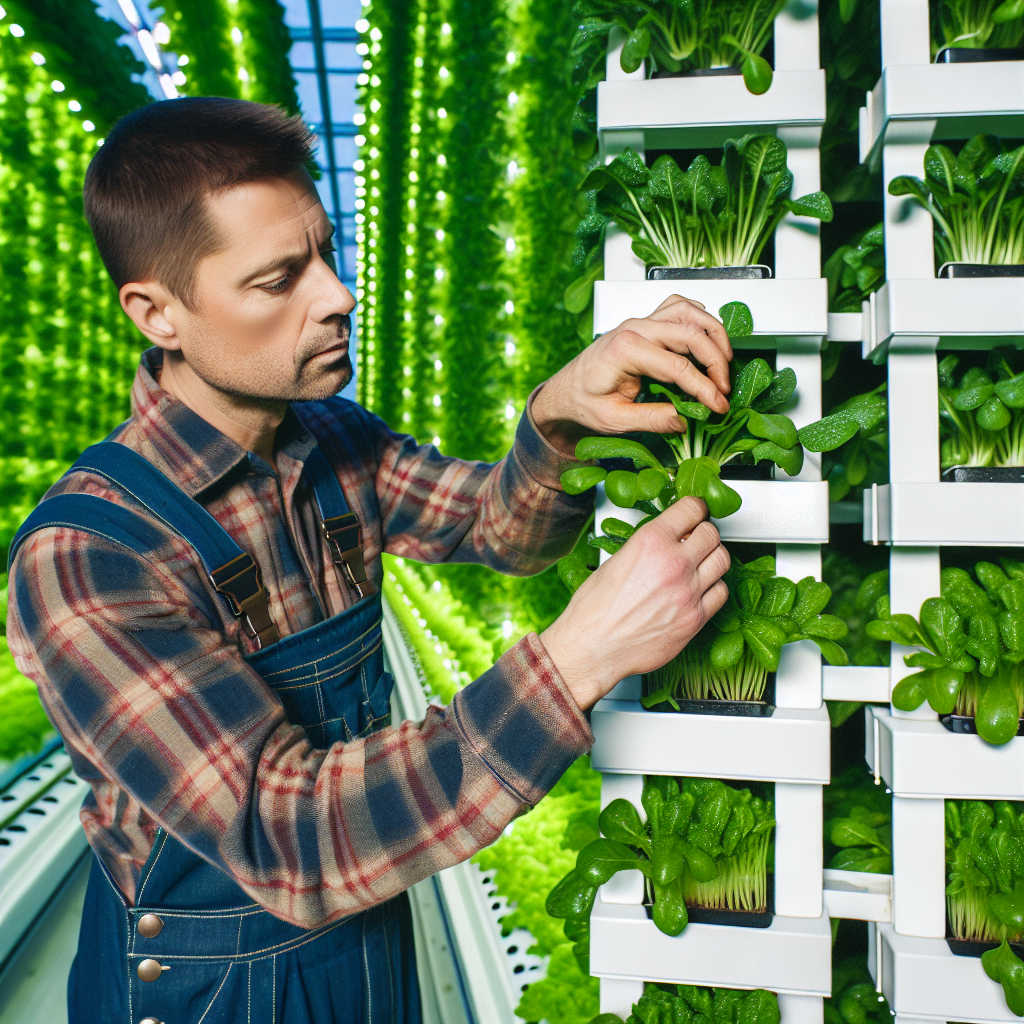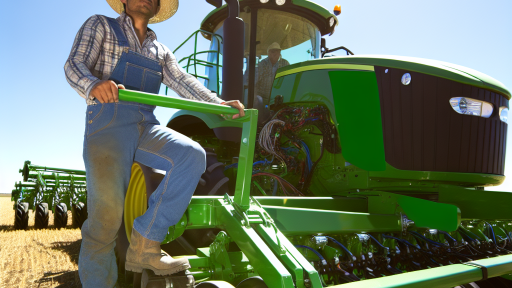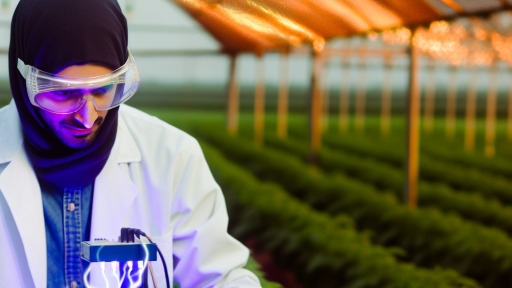Introduction to Vertical Farming
Definition of Vertical Farming
Vertical farming refers to growing crops in stacked layers or vertically inclined surfaces.
This method can utilize controlled-environment agriculture technology.
Essentially, it maximizes space by using urban areas more efficiently.
Importance of Vertical Farming
Vertical farming addresses many challenges in traditional agriculture.
First, it can significantly reduce land usage compared to conventional farming.
Moreover, it allows for food production in urban locations.
This technique can help ensure food security in densely populated regions.
Additionally, it minimizes transportation costs and related emissions.
Advantages of Vertical Farming
Vertical farming offers numerous benefits for sustainable agriculture.
- It optimizes resource use such as water and energy.
- The technique reduces pesticide use and ensures healthier crops.
- It can be implemented year-round, regardless of weather conditions.
Challenges of Vertical Farming
Despite its potential, vertical farming faces specific challenges.
- Initial setup costs for technology can be high.
- Specialized knowledge and skills are necessary for operation.
- Ongoing research is needed to improve crop yields and efficiency.
Benefits of Vertical Farming for Space Utilization
Maximizing Crop Production
Vertical farming significantly increases crop yields.
By stacking plants in layers, farmers utilize vertical space effectively.
This method allows for year-round production, enhancing efficiency.
Additionally, it enhances access to nutrients and light.
Reducing Land Requirements
Vertical farming greatly decreases the amount of land needed for agriculture.
Transform Your Agribusiness
Unlock your farm's potential with expert advice tailored to your needs. Get actionable steps that drive real results.
Get StartedUrban areas benefit the most from this efficient land use.
Farms can thrive in cities, providing fresh produce locally.
Consequently, this can lead to lower carbon emissions from transportation.
Enhancing Resource Efficiency
Vertical farms utilize water resources more efficiently.
They often implement hydroponic or aeroponic systems.
These systems require up to 90% less water than traditional farming.
Moreover, vertical farming typically involves fewer pesticides and chemicals.
Improving Urban Aesthetics
Vertical farms can beautify urban landscapes.
They can be integrated into buildings, adding green spaces.
As a result, they improve the quality of life for city residents.
This encourages a connection with nature in urban environments.
Boosting Food Security
Vertical farming enhances food security by localizing production.
Close proximity to consumers reduces reliance on imports.
This ensures fresh produce is available all year round.
In turn, communities become more resilient to supply chain disruptions.
Key Technologies in Vertical Farming
Hydroponics
Hydroponics involves growing plants without soil.
Instead, it uses nutrient-rich water to nourish plants.
This method maximizes space and resource efficiency.
Farmers can control nutrient levels and pH easily.
Additionally, crop yields can increase significantly.
Moreover, hydroponics reduces water usage compared to traditional farming.
Aeroponics
Aeroponics suspends plants in the air for growth.
Roots receive a fine mist of nutrients and water.
This technique promotes fast plant growth and high yields.
Showcase Your Farming Business
Publish your professional farming services profile on our blog for a one-time fee of $200 and reach a dedicated audience of farmers and agribusiness owners.
Publish Your ProfilePlants thrive with minimal space and resources.
Furthermore, aeroponics allows for year-round cultivation.
Aquaponics
Aquaponics combines aquaculture and hydroponics.
Fish provide nutrients for plants through their waste.
In return, plants help purify the water for fish.
This symbiotic relationship enhances resource efficiency.
Additionally, aquaponics produces both fish and vegetables sustainably.
It offers a closed-loop system that minimizes environmental impact.
Find Out More: Data Analytics Tools Every Farmer Should Use
Design Considerations for Vertical Farms
Effective Layout Strategies
Designing a vertical farm starts with an effective layout strategy.
A well-planned layout maximizes space utilization and operational efficiency.
Consider incorporating multiple growing levels for optimal use of vertical space.
Additionally, ensure easy access for maintenance and harvesting activities.
Strategically position equipment to streamline workflows and reduce bottlenecks.
Choosing Suitable Structures
Choosing the right structure is pivotal for vertical farming success.
Utilize lightweight materials to facilitate the building’s vertical expansion.
Incorporate insulation to regulate temperature and reduce energy costs.
Additionally, structures should support advanced hydroponic or aquaponic systems.
Always prioritize durability to withstand environmental factors.
Lighting Conditions
Lighting plays a crucial role in plant growth within vertical farms.
Employ energy-efficient LED lights to provide the necessary spectrum for plants.
Consider adjustable light fixtures to cater to different plant needs.
Moreover, implement automated lighting systems for optimal growth cycles.
Climate Control Systems
Effective climate control ensures optimal growing conditions for plants.
Use HVAC systems to maintain temperature and humidity levels consistently.
Incorporate CO2 enrichment systems to enhance plant growth rates.
Regularly monitor environmental conditions to make timely adjustments.
Water Management Solutions
Implement efficient water management systems to conserve resources.
Utilize recirculating systems that minimize water waste during growing cycles.
Consider integrating rainwater harvesting for sustainable water sourcing.
Regularly test water quality to ensure plant health and productivity.
Integrative Technology
Integrating technology can optimize the vertical farming process.
Utilize IoT devices for real-time monitoring of environmental conditions.
Additionally, employ data analytics to improve decision-making and yield forecasting.
Consider automation for planting, watering, and harvesting tasks.
Lastly, invest in remote management systems to ensure smooth operations.
Learn More: Precision Agriculture: Improving Soil Health and Productivity
Case Studies: Successful Vertical Farming Projects Around the World
Urban Harvest in Singapore
Urban Harvest operates one of Southeast Asia’s largest vertical farms.
They maximize space by stacking layers of crops vertically.
This method increases yield while minimizing land use.
Showcase Your Farming Business
Publish your professional farming services profile on our blog for a one-time fee of $200 and reach a dedicated audience of farmers and agribusiness owners.
Publish Your ProfileUrban Harvest grows a variety of greens and herbs.
They utilize advanced hydroponics technology for growth.
Additionally, they reduce water consumption significantly.
As a result, Urban Harvest promotes sustainable urban farming.
Sky Greens in Singapore
Sky Greens implements a unique A-frame system for vertical farming.
Their innovation allows crops to grow in a controlled environment.
This system minimizes the footprint while maximizing harvest.
Furthermore, they focus on local vegetable production.
Sky Greens uses 90% less water compared to traditional farming.
This initiative effectively addresses urban food demands.
Aerofarms in Newark, New Jersey
Aerofarms is a pioneer in indoor vertical farming in the U.S.
Their system uses aeroponics, enabling misting of the roots.
This technique fosters rapid crop growth without soil.
Aerofarms grows various leafy greens year-round.
Moreover, they aim to provide fresh produce to local markets.
Their model reduces transportation emissions and enhances freshness.
Tokyo’s Pasona Urban Farm
Pasona has integrated gardening into its office space in Tokyo.
This innovative approach promotes employee wellness and productivity.
Employees can cultivate their own vegetables during breaks.
The office uses hydroponic systems to facilitate growth indoors.
This initiative highlights the importance of green spaces in urban settings.
Moreover, it increases awareness about local food production.
Growing Underground in London
Growing Underground operates a subterranean vertical farm in London.
They utilize an old World War II bomb shelter for farming.
This creative reuse of space maximizes urban agricultural potential.
The farm uses LED lighting to support plant growth.
This method conserves energy while promoting year-round cultivation.
Additionally, Growing Underground supplies fresh produce to local chefs.
Farming in the Clouds, Netherlands
Farming in the Clouds is a unique vertical farm located in a skyscraper.
This farm utilizes natural sunlight through glass walls.
They employ smart technology to optimize growing conditions.
This innovative project aims to reduce urban food deserts.
Urban residents benefit from locally grown produce.
Farming in the Clouds represents a forward-looking approach to agriculture.
Discover More: Remote Sensing Technologies for Organic Farmers

Challenges of Vertical Farming
Costs
Vertical farming often requires a substantial initial investment.
Building the infrastructure can be expensive for many companies.
High-tech equipment adds to these costs significantly.
These expenses can deter new entrants into the market.
Long-term financial planning is crucial for sustainability.
Showcase Your Farming Business
Publish your professional farming services profile on our blog for a one-time fee of $200 and reach a dedicated audience of farmers and agribusiness owners.
Publish Your ProfileEnergy Consumption
Energy consumption is a major concern in vertical farming.
Artificial lighting is necessary for plant growth indoors.
This results in higher electricity bills for operators.
Renewable energy sources can mitigate some of these costs.
However, they often require additional upfront investments.
Resource Management
Efficient resource management is essential for success.
Water usage must be carefully monitored to prevent waste.
Hydroponic systems require precise nutrient management.
Overusing chemicals can lead to plant health issues.
Sustainable practices can improve overall resource efficiency.
Uncover the Details: Integrating Remote Sensing into Farm Management
Future Trends in Vertical Farming Technology and Methods
Emerging Technologies
Innovative technologies are revolutionizing vertical farming.
Hydroponics and aeroponics are gaining popularity for growing crops efficiently.
These methods require less water than traditional farming.
Vertical farms increasingly use LED lighting for better energy management.
Furthermore, automation is transforming labor-intensive processes.
Robotics and AI systems enhance planting and harvesting efficiency.
Urban Integration
Urban areas are recognizing the potential of vertical farming.
More cities are supporting vertical farms within their communities.
This trend reduces transportation costs and carbon emissions.
Architects are designing buildings with integrated farms.
These designs promote sustainability and food security.
Sustainability Practices
Vertical farming emphasizes sustainable practices.
Renewable energy sources are powering many facilities.
Composting and recycling are standard practices in these farms.
Moreover, vertical farms often use organic farming techniques.
This promotes healthy growing environments for plants.
Consumer Preferences
Consumer demand is shifting towards locally grown food.
This preference supports the growth of vertical farming operations.
Markets are increasingly featuring fresh produce from nearby farms.
Additionally, consumers are becoming more aware of food sustainability.
They seek transparency in farming practices.
Investment Opportunities
Investment in vertical farming is on the rise.
Both private and public sectors are recognizing its potential.
Startups are emerging with innovative solutions for vertical farming.
This influx of capital accelerates technology development and farming methods.
Moreover, governments are offering incentives for sustainable agriculture.
Integrating Vertical Farming with Urban Planning and Development
The Role of Vertical Farming in Urban Design
Vertical farming optimizes limited urban land for agriculture.
This method allows cities to produce food locally, reducing transport costs.
Moreover, it enhances food security by providing fresh produce year-round.
Showcase Your Farming Business
Publish your professional farming services profile on our blog for a one-time fee of $200 and reach a dedicated audience of farmers and agribusiness owners.
Publish Your ProfileCities can incorporate green spaces seamlessly into their infrastructures.
Designers can use rooftops and building facades for vertical gardens.
Collaboration Between Stakeholders
Successful integration requires collaboration among various stakeholders.
Urban planners must work with agricultural experts and developers.
Public-private partnerships can fund vertical farming projects effectively.
Involvement of local governments ensures regulatory support.
Additionally, community engagement fosters public interest and acceptance.
Environmental Benefits of Vertical Farming
This farming method significantly reduces energy consumption.
Water use is more efficient compared to traditional farming practices.
Vertical farms can utilize renewable energy sources, such as solar power.
Therefore, they can help cities meet sustainability goals.
Furthermore, these farms improve air quality through plant absorption.
Economic Impacts and Opportunities
Vertical farming opens new market opportunities in urban areas.
It can create jobs in agriculture, technology, and logistics.
This innovation attracts investments and stimulates local economies.
Moreover, it promotes the development of new supply chains.
Local businesses benefit from reduced transportation costs and fresher products.
Future Trends and Innovations
Technological advancements will continue to shape vertical farming.
Automation and AI can enhance operational efficiency in farms.
Hydroponics and aeroponics will further increase yield in small spaces.
Cities will likely adopt vertical farming systems in new developments.
Urban policymakers must encourage research and innovation in this field.
Additional Resources
AI in Agriculture and Farming: Revolutionizing Crop Growth – Intellias




